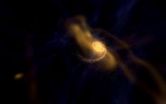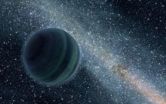(Press-News.org) Every year, the world consumes 15 Terrawatts of power. Since the amount of annual harvestable solar energy has been estimated at 50 Terrawatts, students at Stevens Institute of Technology are working on a supercapacitor that will allow us to harness more of this renewable energy through biochar electrodes for supercapacitors, resulting in a cleaner, greener planet.
Supercapacitors are common today in solar panels and hydrogen fuel cell car batteries, but the material they use to store energy, activated carbon, is unsustainable and expensive. Biochar, on the other hand, represents a cheap, green alternative. The Chemical Engineering Senior Design team of Rachel Kenion, Liana Vaccari, and Katie Van Strander has designed biochar electrodes for supercapacitors, and is looking to eventually bring their solution to market. The group is advised by Dr. Woo Lee, the George Meade Bond Professor of Chemical Engineering and Materials Science.
For their project, the team designed, fabricated, and tested a prototype supercapacitor electrode. The group demonstrated biochar's feasibility as an alternative to activated carbon for electrodes, which can be used in hybrid electric automobile batteries or home energy storage in solar panels.
"While the team's findings are preliminary, the approach taken by us represents a small, but potentially very important step in realizing sustainable energy future over the next few decades," says Dr. Lee.
Biochar is viewed as a green solution to the activated carbon currently used in supercapacitor electrodes. Unlike activated carbon, biochar is the byproduct of the pyrolysis process used to produce biofuels. That is, biochar comes from the burning of organic matter. As the use of biofuels increases, biochar production increases as well. "With our process, we are able to take that biochar and put it to good use in supercapacitors. Our supply comes from goldenrod crop, and through an IP-protected process, most organics, metals, and other impurities are removed. It is a more sustainable method of production than activated carbon," Liana says. Another significant advantage: biochar is nontoxic and will not pollute the soil when it is tossed out. The team estimates that biochar costs almost half as much as activated carbon, and is more sustainable because it reuses the waste from biofuel production, a process with sustainable intentions to begin with.
One of the largest concerns for solar panel production today is the sheer cost of manufacturing supercapacitors. Current photovoltaic arrays rely on supercapacitors to store the energy that is harnessed from the sun. And while the growth rate of supercapacitors is advancing at 20 percent a year, their cost is still very high, in part because they require activated carbon. Biochar, on the other hand, is cheaper and readily available as a byproduct of a process already used in energy production.
"My favorite part of this project was seeing the creation of the prototype," Katie says. "It was cool to be able to hold it in my hand and test it and say that I made this."
"Using this technology, we can reduce the cost of manufacturing supercapacitors by lowering the cost of the electrodes," Katie says. "Our goal is eventually to manufacture these electrodes and sell them to a company that already makes supercapacitors. Once supercapacitors become cheaper, they will become more common and be integrated into more and more devices."
###
About the Department of Chemical Engineering and Materials Science
The mission of the Department of Chemical Engineering and Materials Science is to provide high-quality education and cutting-edge research training to students with strong disciplinary fundamentals and broad interdisciplinary and societal perspectives as adaptive experts and future leaders and innovators in their chosen profession. The programs offered by the Department produce broad-based graduates who are prepared for careers not only in traditional petrochemical, environmental, and specialty chemical industries, but also in such high technology areas as biochemical and biomedical engineering, electronic and semi-conductor processing, ceramics, plastics and high-performance materials, and electrochemical processing. Qualified undergraduates work with faculty on research projects, and many of graduates pursue advanced study in chemical engineering, bioengineering or biomedical engineering, medicine, law, and many other fields.
END
High-temperature superconductivity can be looked at as a fight for survival at the atomic scale. In an effort to reach that point where electrons pair up and resistance is reduced to zero, superconductivity must compete with numerous, seemingly rival phases of matter.
Understanding those phases and whether or not they are rivals or complementary phenomena has consumed the attention of theoreticians and experimentalists in the quest to find superconducting materials capable of functioning at close-to-room temperature, a potential that has gone unrealized for nearly three ...
When taxpayers underreport income, whether intentionally or accidentally, the IRS always catches up. And when they do, they want to get paid - and now.
Sandra (Delevan, NY) found herself in just this predicament when she came into the Blue Tax offices with an IRS tax liability of $3,636 due to a 2006 tax return filed with underreported income. The goal of the team at Blue Tax was getting this client on a payment arrangement that accurately reflected her income, resolving all of this in a timely manner.
First, Blue Tax met with the client and submitted their personal ...
Mummies from along the Nile are revealing how age-old irrigation techniques may have boosted the plague of schistosomiasis, a water-borne parasitic disease that infects an estimated 200 million people today.
An analysis of the mummies from Nubia, a former kingdom that was located in present-day Sudan, provides details for the first time about the prevalence of the disease across populations in ancient times, and how human alteration of the environment during that era may have contributed to its spread.
The American Journal of Physical Anthropology is publishing the ...
Boston, MA - Charles J. Dimitroff, MS, PhD and colleagues in the Dimitroff Lab at Brigham and Women's Hospital, have developed a fluorinated analog of glucosamine, which, in a recent study, has been shown to block the synthesis of key carbohydrate structures linked to skin inflammation and cancer progression. These findings appear in the April 14, 2011, issue of the Journal of Biological Chemistry.
Dr. Dimitroff and colleagues show for the first time that the fluorinated glucosamine therapeutic works not through direct incorporation into growing sugar chains as previously ...
CHAPEL HILL, N.C. – A team of researchers, including a number from the University of North Carolina at Chapel Hill School of Medicine, have pinpointed regions of the genome that contribute to the debilitating lung disease that is the hallmark of cystic fibrosis.
Their findings provide insight into the causes of the wide variation in lung disease severity experienced by CF patients. It also points the way to new diagnostic markers and therapeutic approaches for this and more common lung diseases such as COPD.
This study, which appears online Sunday, May 22, 2011 in ...
Quit Tea, the natural stop smoking aid, has received an official professional endorsement. "This is a good product I will continue to tell my clients about," says Leeanne Taylor, a licensed drug and alcohol counselor with a private practice in Bangor, Maine, who specializes in smoking cessation.
Ms. Taylor received free samples of Quit Tea as part of the Quit Tea LLC's local Maine smoking cessation professional detailing program. She said "since that time I have given clients a tea bag and the website so they could get some of their own. The majority of ...
How unique is the Milky Way?
To find out, a group of researchers led by Stanford University astrophysicist Risa Wechsler compared the Milky Way to similar galaxies and found that just four percent are like the galaxy Earth calls home.
"We are interested in how the Milky Way fits into the broader context of the universe", said Wechsler. "This research helps us understand whether our galaxy is typical or not, and may provide clues to its formation history."
The research team compared the Milky Way to similar galaxies in terms of luminosity--a measure of how much light ...
Freelance writer Robert Brault offers a metaphor for the night sky, "A trillion asterisks and no explanations." By supporting astronomers, the National Science Foundation (NSF) helps to provide explanations. A recent NSF- and NASA-funded study provides one more explanation.
Astronomers have discovered a new population of Jupiter-size planets floating alone in the dark of space, away from the light of a star. According to the scientists, these lone worlds were probably ejected from developing planetary systems.
The discovery is based on a joint Japan-New Zealand survey, ...
Researchers from Mount Sinai School of Medicine have discovered a protein signaling pathway that becomes hyperactivated in human sarcoma cells, suggesting that medications to inhibit this pathway may be effective in the treatment of human sarcomas. The research is published in the current issue of the journal Cancer Cell.
A team of researchers led by Stuart Aaronson, MD, Jack and Jane B. Aron Professor and Chairman of the Department of Oncological Sciences at Mount Sinai School of Medicine, compared normal human mesenchymal stem cells to human sarcoma cells and found ...
American Community Television (ACT) sent letters last Thursday to Randall Stephenson, the President of AT&T, and to Jacquelyn Brand, the chair of the AT&T Advisory Panel on Access & Aging, asking that AT&T deliver Public, Educational and Government (PEG) access channels the same as all other channels on the U-Verse system.
"AT&T's U-Verse platform discriminates against persons who are blind or visually impaired," said John Rocco, President of ACT. "We cannot access PEG channels through the Channel 99 on-screen menu."
Mr. Rocco, ...



